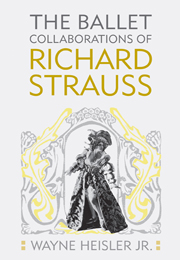Introduction: Richard Strauss, Dance, and Ballet
Published online by Cambridge University Press: 12 September 2012
Summary
With Strauss there is no second tier, only first tier—or works of negligible worth (zweiten Rang gibt es bei ihm nicht, nur ersten—oder geringwertiges).
—Richard Specht, Richard Strauss und sein Werk (1921)In taking leave of [Strauss] I suggest that he should come with us to the Ball at the Ecole Normale; he makes a face, and says that he prefers to go to the “Federball,” to the feather ball, in other words his bed. “Nevertheless, you must be fond of dancing?”—“Me? Oh, of course.”—And with his big, gawky body he essays an entrechat in the middle of the drawing room.
—Romain Rolland, diary entry dated March 10, 1900In a letter written on December 12, 1940 to Clemens Krauss, then the director of the Munich Opera, Richard Strauss located “the real essence of dance” in “freedom from the earth's gravity” (Befreiung von der Erdenschwere). This statement was made during the creation of Strauss's final ballet, entitled Verklungene Feste: Tanzvisionen aus Zwei Jahrhunderten (Bygone Celebrations: Dance Visions from Two Centuries, 1941) in collaboration with Krauss and the dancer-choreographer team of Pia and Pino Mlakar. In Verklungene Feste, the history of dance is rendered by an allegory that focuses on the transitions from baroque courtly ritual through eighteenth-century pantomimic ballet d'action to a romantic “white ballet” (ballet blanc) en pointe. Strauss gave his description of dance as “freedom from the earth's gravity” in reference to the latter, nineteenth-century layer of Verklungene Feste, its climax: ballerinas clad in tutus and dancing on the tips of their toes, as if in flight.
- Type
- Chapter
- Information
- The Ballet Collaborations of Richard Strauss , pp. 1 - 10Publisher: Boydell & BrewerPrint publication year: 2009

